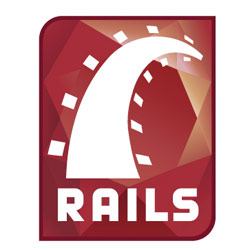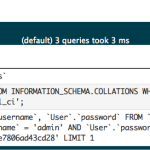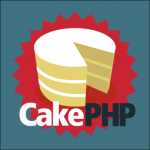CakePHP V/s Symfony
Both CakePHP and Symfony are excellent frameworks for developing robust web applications. Analysing their pros & cons helps you choose the best out of these.
CakePHP v/s Symfony – A Quick Comparison To Help Developers Choose The Best Framework!
PHP based frameworks such as CakePHP and Symfony are increasingly being used for a variety of web application development projects. The best thing about PHP based web application frameworks is that these are freely available & help developers quickly build dynamic applications as per different requirements. However, developers often get baffled when it comes to choosing a PHP based framework for their development project. So, here’s a brief CakePHP v/s Symfony comparison that will help you select the most apt framework.
- Symfony is considered to be enterprise level framework which is easy to use yet powerful. Some of the very big websites such as Yahoo are powered by Symfony. The ORM used by Symfony is simply the best! It is proven to be quite fast and effective. On the other hand, there are certain ORM and naming convention constraints in CakePHP, which make Symfony a winner in this case.
- If you are using CakePHP, then the database to be built is spate from the application i.e. you need to do it yourself. While this is not the case with Symfony. Developers need to use Symfony to build the database with schema files that are written in YAML. Next, you need to build forms and using the schema as a foundation. Both these frameworks use the MVC coding pattern and use object oriented programming principles of PHP.
- If we compare the documentation of these two PHP frameworks, Symfony, definitely has an upper hand. It has a good and lucid documentation which is not the case with CakePHP. Whereas, if we talk about the active community of developers, CakePHP wins the battle!
- One area where Symfony needs major work is that it has a lot of jumbled YML configuration files. CakePHP follows a convention over configuration principle which makes it more preferable than Symfony.
- Talking about the directory structure, CakePHP has a more logical and sensible structure. As a developer, you do not have to be the creator of the framework to understand what each directory is used for. CakePHP has the framework code in a separate directory different from your own code. The directory structure in Symfony is overloaded. The directories in this framework dazzle you completely! It becomes difficult, at times, to figure out what all the directories are there for.
- Coming to Fancy URLs and routing, in Symfony you need to update the file apps/frontend/config/routing.yml (it uses another YAML format). You can route certain calls to certain pages. But this makes it absolutely a breeze to create Fancy URLS in which the URL actually has some real data in it. With CakePHP, you need to update the default routes for creating Fancy URLS. It can be done but it’s not as simply & easy as it seems in Symfony.
- One of the most wonderful things about Symfony is that it comes equipped with an in-built testing platform called Lime. Developers, while writing an application, can actually write the test first, in order to know which area needs more attention. Symfony makes it easier for developers to handle both Functional & Unit testing. It also works equally well with Selenium and PHPUnit. CakePHP, on the other hand, offers developers the liberty to choose a testing platform but does not have one in-built. However, the testing that you can do with CakePHP is lot better than Symfony.
So, by now you must have got a brief idea about the key differences between Symfony and CakePHP. Choosing a framework depends on your end-user requirements, the time you want to spend into learning a framework etc. Both the above frameworks have their own benefits and disadvantages. But both Symfony & CakePHP are growing at a fast pace and look to be highly promising for the developers’ community.
CakePHP V/s CodeIgniter
CakePHP VS CodeIgniter Comparison
CodeIgniter and CakePHP are widely used for building all sorts of web applications these days. However, which framework to choose actually depends on your target objectives & end-user needs as well.
CakePHP v/s CodeIgniter – Which Framework Wins The Race?
The CakePHP v/s CodeIgniter battle is not new. Developers are frequently faced with the most complex question, which framework to choose. All this depends on what really your application development requirements are and the features you are looking for. Both CakePHP and CodeIgniter are open source frameworks which are compatible with PHP 4. Moreover, these frameworks follow the MVC coding pattern which allows developers to separate the Model from the Controller from the View. Another thing which is common between the two frameworks is that these use Routing which includes taking a URL & mapping it to a particular function within controller.
CakePHP & CodeIgniter have excellent Scaffolding feature which essentially is an automated way for generating a view based on the model. However, there is more to Scaffolding in CodeIgniter as it requires a keyword in the URL for accessing the scaffolding. Coming to the most important point, here are a few points which make CakePHP & CodeIgniter different from one another.
- CakePHP follows the Object Relational Mapping technique which includes the conversion of data between incompatible type systems in databases. On the other hand, for CodeIgniter you have to rely on third parties.
- Code generation is another important thing which separates CakePHP from CodeIgniter. The latter does not have any code generation from console. One needs to use a plugin from the same. Whereas CakePHP has an excellent Bake Console that helps in creating models, views and controllers easily. This helps developers build best web applications in quick time.
- CakePHP has an in-built AJAX helper whereas there is none in CodeIgniter. As a novice in the field of web application frameworks, CodeIgniter is easier to learn than CakePHP.
- If we talk about uploading files, then CodeIgniter is a clear winner in this case. This framework has an excellent file uploading class which makes handling uploading files a breeze. CakePHP does not have such feature.
- Both these frameworks have built-in web services. The key difference is that CakePHP supports REST whereas CodeIgniter supports XML-RPC. The frameworks do not support SOAP, for this, you need to have plugins or components.
- CakePHP wins the battle in case of the automatic functionality. CodeIgniter has a very little automatic functionality in comparison to CakePHP. The Automagic feature in CakePHP allows developers to reduce the coding time significantly.
- Documentation is one of the most important factors which come into play while deciding on a framework. CodeIgniter has a very well-organized documentation including list of components with each method and property. It also has a number of forums and wiki which have tons of user-submitted codes. Whereas, CakePHP’s documentation is not as impressive as CI.
- When it comes to model handling, CodeIgniter is very simple and easy. It lets developers ape a standard SQL query having a few simple commands. All this is slightly differs in CakePHP. It automatically loads in the model which matches the existing controller. Developers can turn off the automated loading and even assign different models which ideally should be loaded by the controller. CakePHP makes the entire process of querying easier & simpler.
So, which framework a developer should go for?
Well, both CakePHP & CodeIgniter have their own pros & cons. Ideally, if you are a Ruby on Rails fan, then CakePHP should be your preferred choice since CakePHP has been developed in its lines. And, in case you want to develop your skills further and learn a new framework then go for CodeIgniter. If you are willing to spend some time learning & honing your web development skills, CakePHP is a good option to choose. Finally, it all depends on application development requirements. Have a clear picture of what you need out of a framework, it helps you immensely in choosing a web application framework.
CakePHP V/s Ruby On Rails
CakePHP VS Ruby on Rails Comparison
CakePHP & Ruby on Rails have been here for quite some time and both are highly renowned as the best web application frameworks. Explore more about these two frameworks to get a firmer understanding about which framework to go for!
CakePHP v/s Ruby on Rails – Deciding which framework to opt!
CakePHP and Ruby on Rails are some of the most popular open source frameworks used for developing dynamic websites and web applications. However, often developers come across this question – CakePHP or Ruby on Rails? Well, the answer, to a large extent depends on what you really need out of a web application framework, the time you are willing to spend learning it, and the features you are looking forward to. So, here’s a quick CakePHP v/s Ruby on Rails comparison that will help you narrow down your choice.
To start with, CakePHP was immediately introduced after Ruby on Rails and is developed in accordance with it. Both these frameworks work on the Object Oriented Programming principles and extensively make the use of MVC architecture for rapid web application development. The difference however lies in, that Ruby on Rails has a far superior OOP implementation than in CakePHP. But when it comes to performance, CakePHP has an upper hand over RoR. Mentioned below are some critical points of difference between CakePHP and RoR.
- When a developer is working with CakePHP, he/she has to retrieve all of the data from the database in the controller in order to pass it to View. Now the entire data is stored in an associative, which makes accessing data very simply & easy. However, it lacks the functionality of using an object. The data which you require from associated models has to exist in the array(s) which you pass to View. A developer can grab the data from the models with the help of CakePHP’s recursive option which grabs the entire data in surrounding models. With CakePHP, there is a lot of wasted data retrieval. But with Ruby on Rails this is not the case. You can easily go through the data models while you are still in the View and in case object does not have the data, it automatically queries the database. Now, this is simply amazing about RoR.
- If we talk about URL Routing, Ruby on Rails wins the battle. RoR has some excellent routing functionality. You might feel that CakePHP is very similar to RoR but in reality it isn’t. The most obvious difference is that CakePHP has a one-way routing in comparison to RoR. In CakePHP you need to set up your routes in the configuration and must remember the URL structure and have to write the structures across the entire application yourself. On the other hand, Ruby on Rails has an impressive two-way routing!
- In case you are PHP developer, then working with CakePHP would be easier for you as you need not learn the Ruby Programming language from scratch. So, if you do not wish to spend a lot of time learning a new language, CakePHP is the framework you should go for!
- When it comes to setup, installation and deployment, CakePHP has an edge over Ruby on Rails. For using RoR, you need to download & install Ruby, then MySQL and you need to install Rails too. Next, you even need to configure the web server. Now if you go with the LAMP route, it turns out to be less flexible. CakePHP, on the other hand, is completely a breeze to install.
So, finally which framework wins the battle? Well, as a developer you carefully need to analyze the pros and cons of a framework before choosing one. You also need to figure out your application requirements and the learning curve which you are willing to undergo. Both CakePHP and Ruby on Rails have their own flipsides and advantages, however these look promising and are widely used for building different kinds of websites and intuitive web applications.
CakePHP Framework V/s Zend Framework
CakePHP Framework v/s Zend Framework – Which Web Application Framework To Choose?
The web development world has witnessed countless innovations in past several years. With the introduction of open source era, developers, today find plenty of web application frameworks which can be used for building unique applications. Some of the most popular frameworks available today are CakePHP & Zend. As a developer, you must have always wondered about which framework to choose. Well, here’s a quick CakePHP v/s Zend comparison so that you can choose a framework that best meets your application development requirements.
To begin with, both these frameworks are freely available and follow the object oriented programming principles & the MVC coding pattern. One of the key differences is that CakePHP is developed in lines with Ruby on Rails, whereas the Zend Framework has been carved out using PHP 5 programming language. To find out which framework is actually better, you need to first have a brief overview of these two solid open source frameworks.
About CakePHP – The Most Popular Rapid Application Framework
CakePHP as an open source framework is distributed under the MIT License and mainly uses principles such as ORM & MVC. This helps developers cut down the web application development cost and time. Moreover, developers need not spend much time writing complex codes. One of the best parts about using the CakePHP Development platform is that it has in-built support for both PHP 4 as well as PHP 5. So in case you are considering building an application with PHP 4, then CakePHP would be a better option than the Zend Framework.
Unique features offered by the CakePHP Application Development platform
- Absolutely easy to understand and sets the industry standards in security, session handling, among other things.
- Built in view helpers for AJAX, JavaScript, HTML Forms
- Offers powerful and flexible data validation features
- Has an excellent fast & flexible Templating
- Follows Convention over Configuration philosophy
- Cool Scaffolding which is a great way of getting the early parts of developing a web application started
Downside of CakePHP Framework
- The schema manager of CakePHP automates too much. What it does is that instead of writing your own schema changes which is similar to Ruby on Rails, the manager tries to figure it out on its own, not bringing good results! For instance, if a developer is renaming a column and wants to port that change to different database with the help of cake console, instead of renaming the column the manager drops the column and makes a new one. This implies that the entire column data is gone. All this happens because there isn’t a way of knowing the difference between a rename and a drop/add after it has already happened.
- Has an arbitrary and seemingly random nesting of HTTP input parameters.
- CakePHP’s default routing does not utilize REST and is very difficult to drive into anything that resembles REST.
- The model instances are represented as PHP arrays which should represented as objects.
- Another disadvantage is that its cache function is not up to the mark. The configuration also suffers. This makes CakePHP unsuitable to build large & complex web applications.
Zend Framework – A Fully Equipped PHP 5 Based Open Source Framework
Zend Framework is the brainchild of Zend Technologies and is distributed under the BSD License. This framework was introduced to make things easier for PHP developers and support best practices. Zend framework is the best framework you should go for in case you are looking forward to have complete control over the application design and require built-in support for popular Web Services. Another reason to go for the Zend framework is that it has simple access to data formats which are much needed in Web 2.0 based applications.
Key features of Zend Application Framework
- Unmatched & flexible architecture that promotes hassle-free web application development. In short there are no development complexities, which eat away your precious time and money.
- Rich library support for repeated use in application development
- Support for AJAX through JSON, which offers ease of use of the framework Has an easy coding procedure which helps build rapid web applications quickly
- Offers high degree of scalability that accommodates future expansions/changes
- Integrates well with Adobe flash builder 4 to support RIA development
- Zend is backed by an active community of developers and has good documentation in place
Downside of Zend Framework
- The entry costs are absolutely high for Zend framework as there are no automated scripts, creating an application including the import file etc all are hand-built.
- The MVC feature that Zend follows is completely weak. Developers still cannot get complete freedom & control over the front page.
- Zend Framework application framework as a medium is not, and can barely handle large PHP applications. It definitely requires some more work.
Conclusion
To conclude, both these open source frameworks have their own advantages & disadvantages. The type of framework you should choose actually depends on your application development purpose & requirements. These two frameworks are growing at a healthy pace and look to be very much promising!
Source : http://www.ycakephp.com











What’s up every one, here every person is sharing these experience, therefore it’s good to read this
weblog, and I used to go to see this web site
everyday.
Good post. I learn something totaslly new and challenging on sites I stumbleupon on a daily basis.
It’s always helpful to read articles from other authors and use a little
something from their web sites.